
Under the Whyte notation for the classification of steam locomotives, 4-8-2 represents the wheel arrangement of four leading wheels, eight powered and coupled driving wheels and two trailing wheels. This type of steam locomotive is commonly known as the Mountain type, though the New York Central Railroad used the name Mohawk for their 4-8-2s.
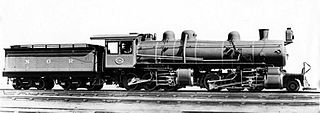
Under the Whyte notation for the classification of steam locomotives by wheel arrangement, 2-6-6-0 is a locomotive with one pair of unpowered leading wheels, followed by two sets of three pairs of powered driving wheels and no trailing wheels. The wheel arrangement was principally used on Mallet-type articulated locomotives. Some tank locomotive examples were also built, for which various suffixes to indicate the type of tank would be added to the wheel arrangement, for example 2-6-6-0T for an engine with side-tanks.
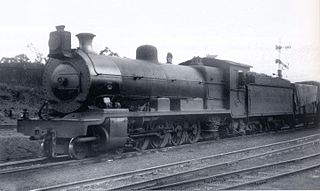
The South African Railways Class 14B 4-8-2 of 1915 was a steam locomotive.

The South African Railways Class 10D 4-6-2 of 1910 was a steam locomotive from the pre-Union era in Transvaal.
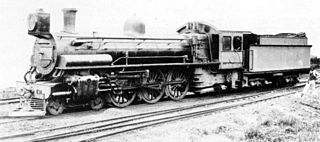
The South African Railways Class 10B 4-6-2 of 1910 was a steam locomotive from the pre-Union era in Transvaal.

The South African Railways Class 10A 4-6-2 of 1910 was a steam locomotive from the pre-Union era in Transvaal.

The South African Railways Class 6L 4-6-0 of 1904 was a steam locomotive from the pre-Union era in the Cape of Good Hope.
The South African Railways Class 1 4-8-0 of 1904 was a steam locomotive from the pre-Union era in the Colony of Natal.
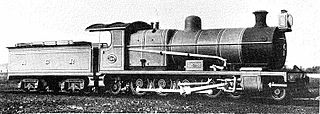
The South African Railways Class 1B 4-8-2 of 1904 was a steam locomotive from the pre-Union era in the Colony of Natal.
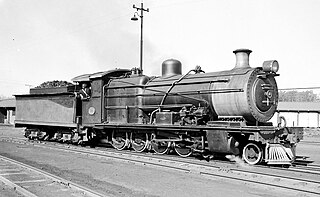
The South African Railways Class 1A 4-8-0 of 1910 was a steam locomotive from the pre-Union era in the Colony of Natal.
The South African Railways Class 2 4-6-2 of 1905 was a steam locomotive from the pre-Union era in the Colony of Natal.
The South African Railways Class 2C 4-6-2 of 1910 was a steam locomotive from the pre-Union era in the Colony of Natal.

The South African Railways Class 3 4-8-2 of 1909 was a steam locomotive from the pre-Union era in the Colony of Natal.

The South African Railways Class 3B 4-8-2 of 1912 was a steam locomotive.

The South African Railways Class G 4-8-2T of 1904 was a steam locomotive from the pre-Union era in the Colony of Natal.

The South African Railways Class MA 2-6-6-0 of 1909 was a steam locomotive from the pre-Union era in the Natal Colony.
The South African Railways Class MG 2-6-6-2 of 1911 was a steam locomotive from the pre-Union era in Transvaal.
The South African type SH tender was a steam locomotive tender from the pre-Union era in the Natal Colony.

The South African type TJ tender was a steam locomotive tender from the pre-Union era in the Natal Colony.
The South African type TM tender was a steam locomotive tender from the pre-Union era in the Natal Colony.














